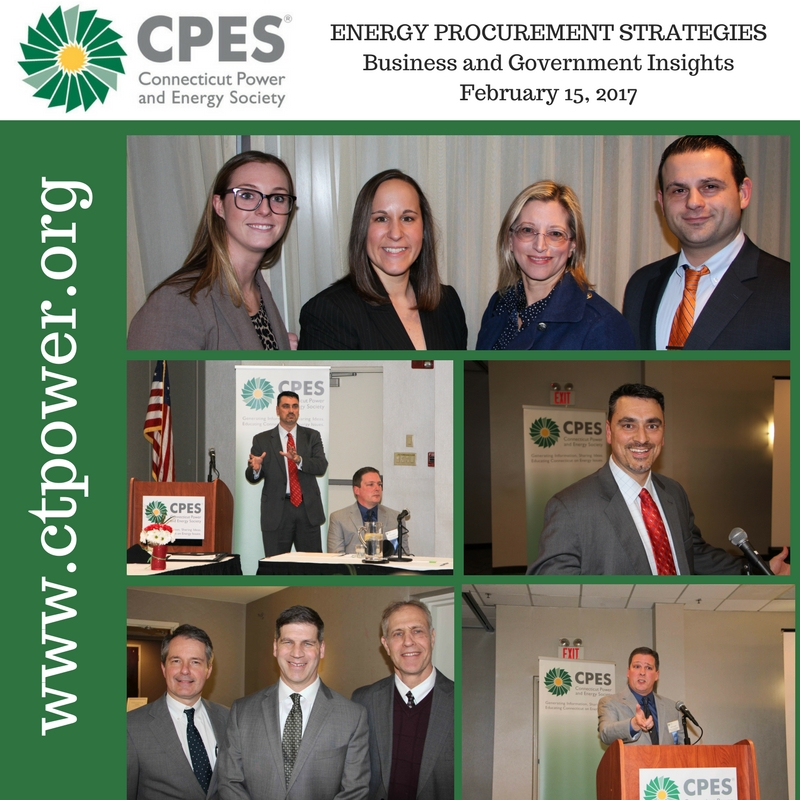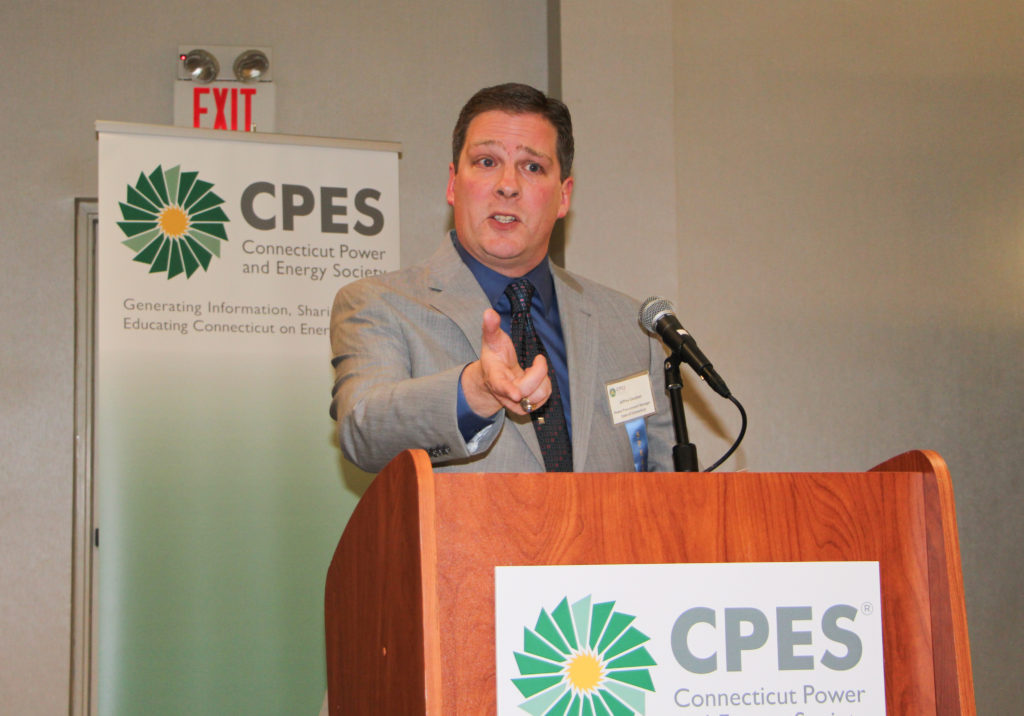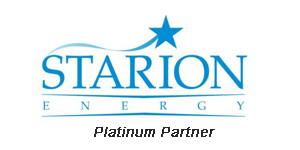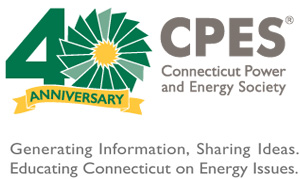
WRAP UP:
February 15, 2017: CPES Hosts Discussion on Energy Procurement Strategies
Click here for David Ferro’s Presentation
On February 15, 2017, the Connecticut Power and Energy Society (CPES) hosted a discussion on energy procurement strategies featuring government and business insights from Jeffrey Gaudiosi, Power Procurement Manager for the State of Connecticut, and David Ferro, Director of Energy Management Services and Business Development for Pennoni Associates.
 Jeffrey Gaudiosi opened the discussion with a look back at how energy was procured in the state of Connecticut after the electricity market deregulated in 1998. Deregulation allowed retail customers to choose a competitive supplier of electricity, but required the state’s electric distribution companies to continue to provide “Standard Service” and “Supplier of Last Resort Service” to customers who did not choose a competitive supplier. He explained that the legislature dictated how electricity was procured for these customers, requiring the utilities to employ a three-year laddering model for Standard Service power procurements. This procurement method involved a series of overlapping wholesale contracts extending over several years, which kept retail electricity prices relatively stable for consumers. This method worked well for many years, Gaudiosi explained, but fell out of favor when Standard Service rates reached record levels and prevented retail customers from taking advantage of declining wholesale electricity prices in the 2009-2010 timeframe.
Jeffrey Gaudiosi opened the discussion with a look back at how energy was procured in the state of Connecticut after the electricity market deregulated in 1998. Deregulation allowed retail customers to choose a competitive supplier of electricity, but required the state’s electric distribution companies to continue to provide “Standard Service” and “Supplier of Last Resort Service” to customers who did not choose a competitive supplier. He explained that the legislature dictated how electricity was procured for these customers, requiring the utilities to employ a three-year laddering model for Standard Service power procurements. This procurement method involved a series of overlapping wholesale contracts extending over several years, which kept retail electricity prices relatively stable for consumers. This method worked well for many years, Gaudiosi explained, but fell out of favor when Standard Service rates reached record levels and prevented retail customers from taking advantage of declining wholesale electricity prices in the 2009-2010 timeframe.
When the Department of Public Utility Control (DPUC) and the Department of Environmental Protection (DEP) merged in 2011, a power procurement manager position was created and a power procurement plan was put in place to address many of the shortfalls associated with the former procurement process. According to Gaudiosi, the plan was built to be flexible and allow the state’s utilities to adjust to market conditions. Power supply rates were fixed from January through June and from July through December, splitting up the winter months to moderate prices. The timing for power purchases was also adjusted, he explained. The state moved away from long-term contracts and instead purchased power four times a year through short-term contracts to allow customers to benefit from current market prices. The approval process for power procurements was dramatically improved as well, according to Gaudiosi. Instead of waiting 30 hours for bids to be approved, the new power procurement manager could now act with the authority of a public utility commissioner and approve bids within a few hours in consultation with the utilities and the Office of Consumer Counsel. With this improved procurement process, Gaudiosi explained, the state of Connecticut is now enjoying the lowest Standard Service rates since 2004.
 David Ferro rounded out the discussion with a look at how consultants and brokers are changing their power procurement strategies based on what is happening in the marketplace. He highlighted natural gas storage volumes as one of the primary drivers of wholesale electricity prices in the U.S. In New England, he pointed to increasing capacity and transmission costs impacting wholesale electricity prices, and discussed the significant turnover in the generation fleet away from coal- and oil-fired generation toward natural-gas fired generation. This, he said, will put additional pressure on the natural gas infrastructure serving the region, which can have a significant impact on wholesale electricity prices. He concluded with a list of seven steps for developing an energy supply strategy – for facility managers, supply chain professionals, and those involved in managing energy procurement strategies. Technology advancements, he said, will be extremely important in creating a “sustainable energy community” where consumers have more control over their energy supply.
David Ferro rounded out the discussion with a look at how consultants and brokers are changing their power procurement strategies based on what is happening in the marketplace. He highlighted natural gas storage volumes as one of the primary drivers of wholesale electricity prices in the U.S. In New England, he pointed to increasing capacity and transmission costs impacting wholesale electricity prices, and discussed the significant turnover in the generation fleet away from coal- and oil-fired generation toward natural-gas fired generation. This, he said, will put additional pressure on the natural gas infrastructure serving the region, which can have a significant impact on wholesale electricity prices. He concluded with a list of seven steps for developing an energy supply strategy – for facility managers, supply chain professionals, and those involved in managing energy procurement strategies. Technology advancements, he said, will be extremely important in creating a “sustainable energy community” where consumers have more control over their energy supply.
| THANK YOU TO OUR SPONSORS! | |
 |  |
 |
